BenQ XL2720T Gaming Monitor Reviewed
by Chris Heinonen on June 17, 2013 4:35 PM ESTI calibrate every monitor using CalMAN V5 with an i1Pro spectrometer and a SpectraCal C6 colorimeter. Our first calibration target is for 200 nits of light output, the sRGB color gamut, and a power gamma of 2.2. For the calibration I used the Standard mode on the monitor, as that allowed access to the User Color Temperature control, which let me set 100% white correctly without using the video card LUT.
Using this setup, our grayscale really comes into line on the BenQ. Our average error is really non-existent, other than at 0 which we can’t fix, and I can’t exclude from this chart or I would. The color tint has been totally eliminated, and the gamma is almost spot-on. Our contrast ratio has risen to 820:1, a 16% increase in what is often the most important element of an image overall. As far as grayscale goes, this is essentially perfect.
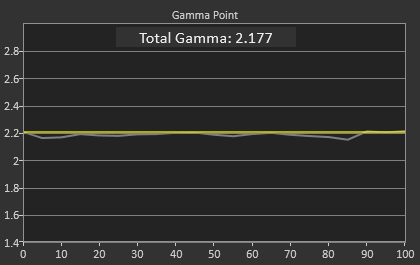
On the color side we see some improvement, but this is mostly due to the improvement in the grayscale. SpectraCal is going to improve CalMAN to remove White from the Gamut dE2000 number, to provide a more accurate data point on how much color error was improved in the future. The red primary is a little under-saturated and green is a little low in luminance, both errors that calibration can’t correct. The color gamut is good, but not excellent.
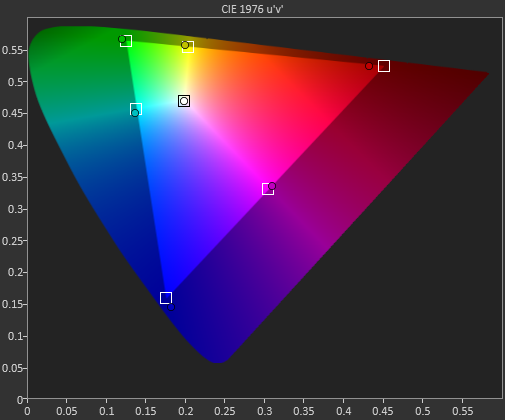
The Colorchecker data is better, but also not perfect here. The formerly high luminance has now been fixed, and luminance is nearly perfect. Those orange-yellow shades continue to cause issues however, with errors close to 3, and the same goes for a shade of blue that lies on the edge of the sRGB gamut. The numbers are much better than before but not as good as some other displays, especially on those orange-yellow colors.

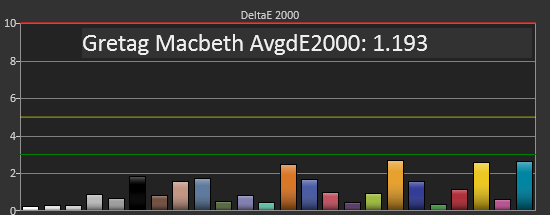

After calibration the saturations are almost worse at 100%, but better below that. Some people disagree on if it is better to have 100% saturation fixed or the values below that have a lower error, but overall the values are better than they were before calibration.
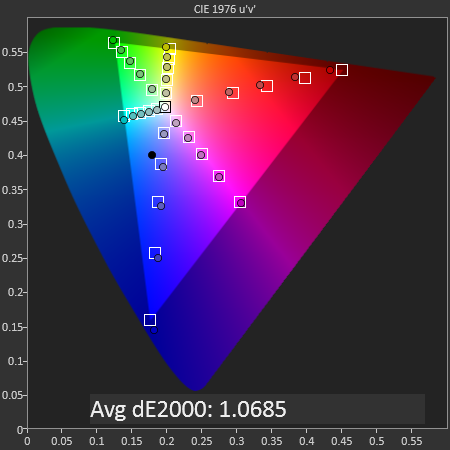
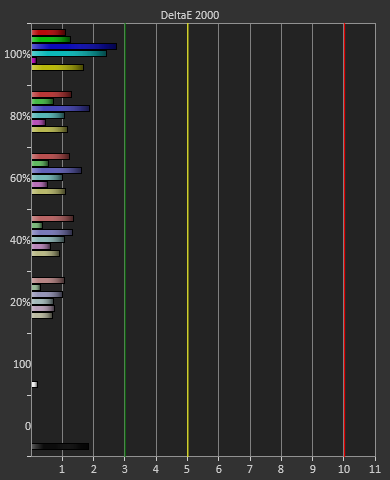
Post calibration, the BenQ is certainly better than it was before it. It is virtually perfect in the grayscale, but the gamut doesn’t improve that much as the issues it has are ones that calibration can’t fix, as calibration can’t add luminance or saturation that isn’t there to begin with. I was happy to see how much the BenQ improved, and you can do much better than the preset sRGB mode.


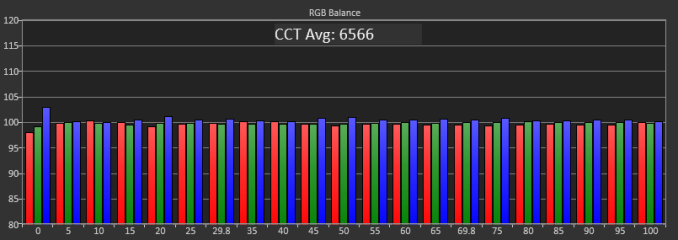
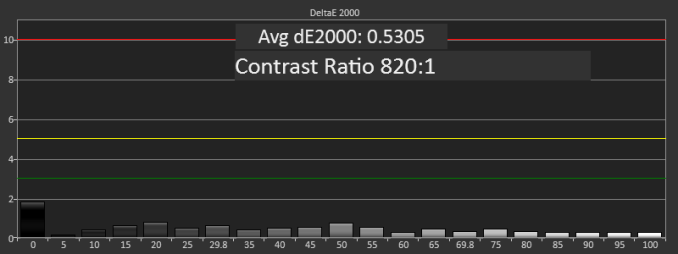










79 Comments
View All Comments
althaz - Monday, June 17, 2013 - link
What an absurd thing to say - the vast majority of people have 1080p monitors and it's not just because they represent good value for money.As a gamer and a worker I have a trio of 1080p monitors for several reasons:
@ 1080p I'll be able to run games at maxed settings for a while (and I haven't upgraded for over a year).
Dual monitor > than one big monitor (by a very long way). Triple monitor is of varying degrees of usefulness to most people, but I find two landscape and one portrait monitor is basically perfect for all tasks (some people find three monitors overwhelming however).
mutantmagnet - Tuesday, June 18, 2013 - link
We can downsample a lot of games these days. Until strobe backlighting is possible on the IPS panels settling for TN is fine since they are already cheaper and achieving 100+ FPS consistently isn't easy above 1080.tackle70 - Monday, June 17, 2013 - link
Yeah I could never go back to TN panels after making the jump to IPS, and I play tons of games. I am guessing that 99.9% of gamers are not good enough for the 120 Hz to make any real difference other than as a placebo effect, and so I don't see the point.I wish we could get some new technologies out there other than this TN garbage :\
TesseractOrion - Monday, June 17, 2013 - link
I have a Yamasaki Catleap (IPS) and a Qnix Q2710 (PLS) , the latter at 120Hz, the former @ 60Hz (only due to DVI restriction on the 7950 GPU, had it up to 116Hz on the DL-DVI port). Hard to go back to TN and 1920x1080 now... very stripped down monitors, no scaler, OSD or multiple inputs, resulting in low input lag as compensation...Jedi2155 - Monday, June 17, 2013 - link
Thanks Chris for your review. I believe it would be a better format in future reviews to add a table of specifications describing the important aspects of the product during the introduction. It took me multiple pages of skimming in order to find the information that this was in fact a standard TN panel at 1920x1080 resolution (I was hoping for a 27" IPS 120 Hz, or at least 2560x1440).While this information could be found with some googling, I've always come to expect AnandTech to provide very poignant and useful information very quickly and easily. Good review and I hope you will continue to refine your skills in the future!
chizow - Tuesday, June 18, 2013 - link
Questionable results and questionable competency with this review. Main concerns below:1) Was this monitor tested with LightBoost always enabled? Main benefit of these 3D Vision Ready panels is their ability to always be in LightBoost mode if you trick the Nvidia driver to set the 3D Vision mode to "Always On".
2) Input lag results are questionable given this is a 120Hz input panel and the results indicate 3 frames worth of input lag. Highly doubtful on a 120Hz TN. Did you set the panel to gaming mode to see if there is a difference?
3) I'd like to see comparisons against the Asus VG278H or even VG278HE, which have become the standard for 120Hz TN LightBoost panels.
mdrejhon - Tuesday, June 18, 2013 - link
The input lag is because the Leo Bodnar input lag tester is limited to 60Hz and HDMI. So it's not an accurate measurement of input lag.chizow - Tuesday, June 18, 2013 - link
Wow, nice catch. I didn't even bother reading the testing methodology, but if true that's a pretty epic fail on reviewer's part. Not only is it probably going through the built-in video scaler/processor at that point and introducing additional latency, but it also effectively cuts refresh rate in half while doubling response times.Really needs to be re-done over DVI and at 120Hz with and without LightBoost.
Samus - Tuesday, June 18, 2013 - link
My last (and only) two BenQ monitors broke. I should have learned for first time after the second one caught fire.jigglywiggly - Tuesday, June 18, 2013 - link
Why did you pick the worst 120hz display? Pick the vg278 or vg248qeboth are 144hz and much better